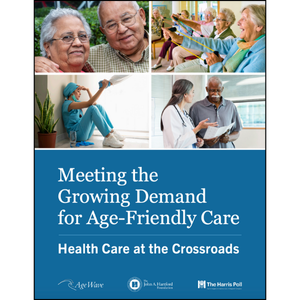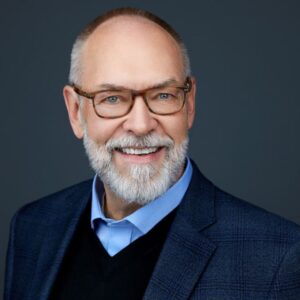White House Conference on Aging agenda items recommended by associations
Details are still being worked out for the 2015 White House Conference on Aging, first announced in July, which is expected to “help shape the landscape for older Americans for the next decade,” according to the conference website. The exact dates and location of the event, held once every decade since the 1960s, have yet to be revealed, although industry leaders are anticipating that limited funding and the lack of re-authorizaton of the Older Americans Act will result in activities being conducted online and/or at smaller, regional gatherings rather than at a large meeting like the one that drew about 2,500 delegates to the nation’s capital over several days for the most recent conference, held in late 2005.
 Cheryl Phillips, MD, was a delegate to the 2005 event, having been appointed by the governor of California, where she was serving as chief medical officer of On Lok Lifeways, the parent to the Program of All-inclusive Care for the Elderly, or PACE, model serving senior citizens in the San Francisco area. Now senior vice president for public policy and advocacy for LeadingAge, Phillips has ideas about where the 2015 conference should direct its efforts.
Cheryl Phillips, MD, was a delegate to the 2005 event, having been appointed by the governor of California, where she was serving as chief medical officer of On Lok Lifeways, the parent to the Program of All-inclusive Care for the Elderly, or PACE, model serving senior citizens in the San Francisco area. Now senior vice president for public policy and advocacy for LeadingAge, Phillips has ideas about where the 2015 conference should direct its efforts.
“It can be an opportunity to focus on housing with services, workforce [and] some of the other key issues—financing long-term services and supports [LTSS]—that can be handled in different ways with different discussant groups,” she tells Long-Term Living.
 LeadingAge is one of the organizations from which conference Executive Director Nora Super has been seeking input in preparation for the event. Super visited with LeadingAge officials at the group’s annual meeting in October.
LeadingAge is one of the organizations from which conference Executive Director Nora Super has been seeking input in preparation for the event. Super visited with LeadingAge officials at the group’s annual meeting in October.
“They’re reaching out to a lot of organizations around the country to listen to people, so we’ll see what happens,” says Larry Minnix, president and CEO of LeadingAge. In addition to the already-announced agenda items of retirement security, healthful aging, long-term services and supports, and elder justice, Minnix says he would like to see the conference tackle issues related to the need to provide affordable senior housing and services, attract a qualified long-term care workforce and improve support for family and professional caregivers.
 Maribeth Bersani, senior vice president for public policy and interim CEO of the Assisted Living Federation of America (ALFA), led the New York delegation at the 1995 conference. She says that next year’s conference will provide an opportunity to educate people about assisted living. “There are still so many people who don’t know what assisted living is, what senior living is,” she tells Long-Term Living.
Maribeth Bersani, senior vice president for public policy and interim CEO of the Assisted Living Federation of America (ALFA), led the New York delegation at the 1995 conference. She says that next year’s conference will provide an opportunity to educate people about assisted living. “There are still so many people who don’t know what assisted living is, what senior living is,” she tells Long-Term Living.
Additionally, Bersani says ALFA would like conference participants to home in on the topic of financial security in retirement. “We really believe that the next generation needs to start thinking and talking about their long-term care needs and how they’re going to pay for them,” she says. “We really want to educate people and find a way to make people start thinking about these things now so they can plan and prepare and grow old the way they want to when they get there.”
 American Health Care Association (AHCA) Chair Len Russ says he hopes the conference “results in some real movement on public policy.”
American Health Care Association (AHCA) Chair Len Russ says he hopes the conference “results in some real movement on public policy.”
Participants “need to wrestle with the idea of predictability of payment modeling and ensuring that patients still have access under new payment models and that their payments are not either curtailed or their choices considerably limited just for the sake of creating a payment system that puts control of it at arm’s length from the government or other public policy makers,” he adds. “I think we really need to be mindful of what we’re getting for our money and the unintended consequences of coming up with a system that we think might be more cost-effective but is not necessarily delivering the kinds of outcomes and results that were promised.”
 His colleague Clif Porter, senior vice president of government relations for AHCA, hopes that conference participants will examine the rule requiring a three-day inpatient hospital stay for Medicare beneficiaries to be eligible for Medicare coverage of Part A skilled nursing care benefits. The Medicare program will be 50 years old in 2015, he notes, “and to think that in 50 years this policy hasn’t changed is, in my mind at least, mindboggling.”
His colleague Clif Porter, senior vice president of government relations for AHCA, hopes that conference participants will examine the rule requiring a three-day inpatient hospital stay for Medicare beneficiaries to be eligible for Medicare coverage of Part A skilled nursing care benefits. The Medicare program will be 50 years old in 2015, he notes, “and to think that in 50 years this policy hasn’t changed is, in my mind at least, mindboggling.”
A permanent solution to Medicare Part B monetary limits on physical, occupational and speech therapy are another area Porter says he would like to see discussed. Another potential therapy-related agenda item, Porter tells Long-Term Living: “We have a system now on the Medicare Part A side that disincentivizes the use of group and what we call concurrent therapy, and it only allows you to use one-to-one therapy. That’s a big issue for us, because group therapy, in many cases, is not only clinically appropriate but outcome-beneficial.”
Porter likened group therapy to going to the gym. “If I have a partner that I’m going to the gym with, I’m likely going to be more motivated to achieve whatever goals I set. If I do it by myself, it’s going to be a little more tough and challenging.”
Share your ideasWhat would you like to see on the White House Conference on Aging agenda? Submit your ideas, and sign up to receive updates about the event, at the conference website. |
The 2005 conference was the first to shine a spotlight on technology, says Majd Alwan, PhD, senior vice president of technology for LeadingAge and executive director of its Center for Aging Services Technologies (CAST).
“I remember participating in the CAST technology exhibit, representing the University of Virginia’s Medical Automation Research Center, where we demonstrated prototypes of passive bed monitors, fall detectors and an instrumented walker,” he tells Long-Term Living. “I remember it vividly! Most of those became products on the market.”
 Alwan, also a member of Long-Term Living's editorial advisory board, says he’d like the conference to discuss assistive technologies as well as how technology can benefit aging services providers and those they serve via telemonitoring (telemedicine/telehealth, biometric remote monitoring, mobile health [mHealth] and telecare), medication management, rehabilitation, social connectedness, safety, care coordination, interoperable electronic health records and health information exchange, or HIE.
Alwan, also a member of Long-Term Living's editorial advisory board, says he’d like the conference to discuss assistive technologies as well as how technology can benefit aging services providers and those they serve via telemonitoring (telemedicine/telehealth, biometric remote monitoring, mobile health [mHealth] and telecare), medication management, rehabilitation, social connectedness, safety, care coordination, interoperable electronic health records and health information exchange, or HIE.
“I firmly believe that these technologies play a significant role in supporting self-management, behavior change and care management, thus enabling healthy aging, improving outcomes and reducing costs, when integrated in ‘right’ care delivery and payment models,” he says. “When such technologies are integrated in coordinated care models that provide health as well as social support services, they enhance independence and reduce long-term care as well as healthcare utilization costs. Hence, they need to be considered when discussing LTSS as well.”
Related content:
2015 Conference on Aging leader, website announced
Our coverage of the 2005 White House Conference on Aging
I Advance Senior Care is the industry-leading source for practical, in-depth, business-building, and resident care information for owners, executives, administrators, and directors of nursing at assisted living communities, skilled nursing facilities, post-acute facilities, and continuing care retirement communities. The I Advance Senior Care editorial team and industry experts provide market analysis, strategic direction, policy commentary, clinical best-practices, business management, and technology breakthroughs.
I Advance Senior Care is part of the Institute for the Advancement of Senior Care and published by Plain-English Health Care.
Related Articles
Topics: Advocacy , Articles , Executive Leadership , Medicare/Medicaid










